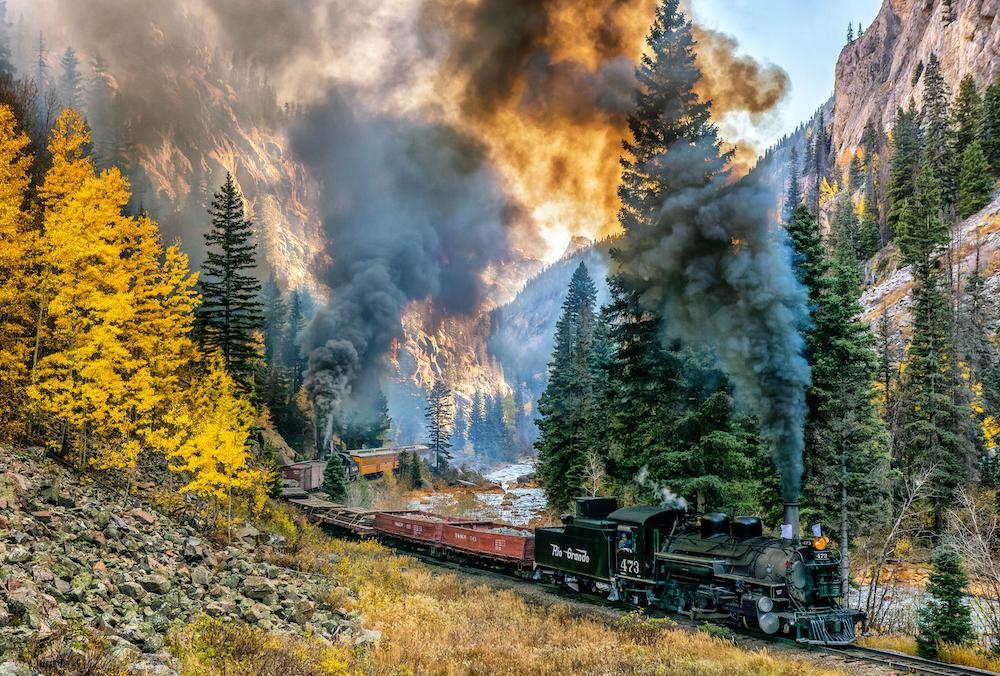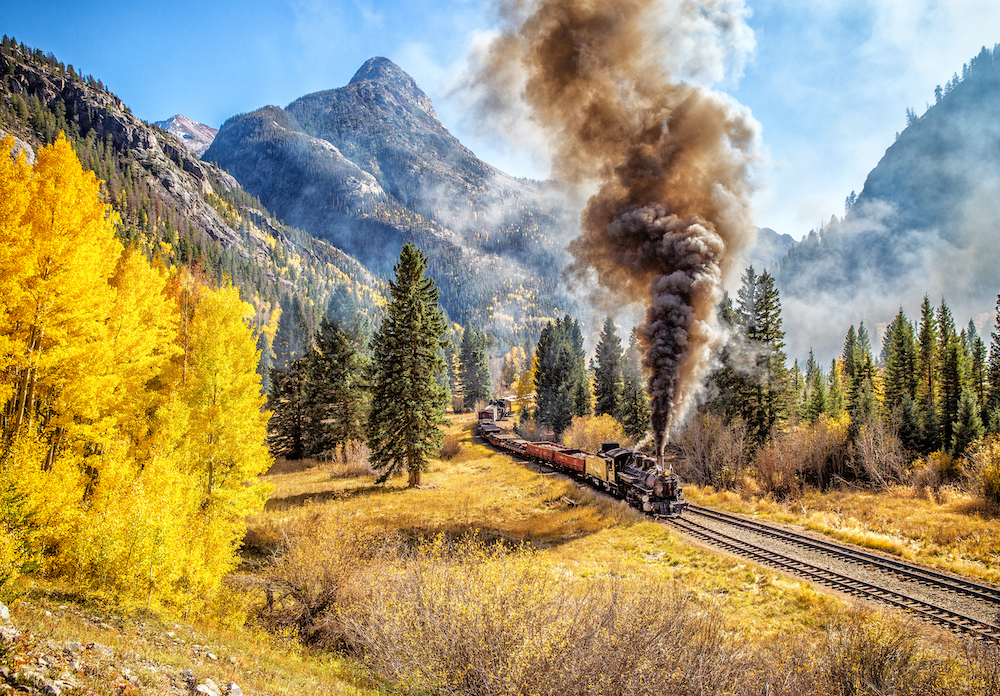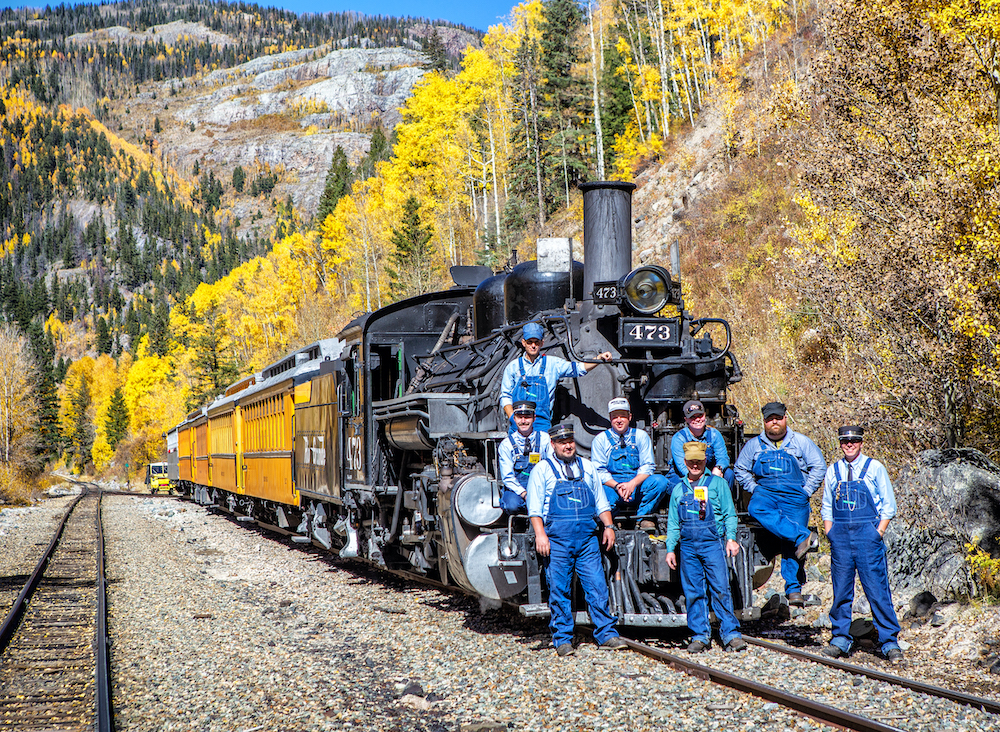Rio Grande’s 2-8-2 Mikado “Sport Model” K-28 locomotives turn 100 years old
By Michael J. Wilson | November 10, 2023
Milestone for Rio Grande’s “Sport Model” steam locomotives

As classic as a ’67 Chevrolet Chevelle SS and as smooth as a Rolls Royce, the Rio Grande’s 2-8-2 Mikado “Sport Model” K-28 locomotives turn 100 years old in 2023. Those 100 years have been spent hauling tonnage across some of the most difficult narrow-gauge right of way in the country and perhaps the world.
In October 2023, the Durango & Silverton Narrow Gauge Railroad (D&S) hosted a two-day photo excursion with K-28 Nos. 473 and 476 to celebrate the centennial. In honor of the event, No. 476 served as a mid-train helper with No. 473 on the point, recreating a train operating scenario that had not occurred on the High Line since at least the 1950s. The photo charter included runbys on the first day north to Silverton with Nos. 473 and 476 at nine different locations deep within the Animas River Canyon. On the concluding second day, the 473 and 476 operated separate passenger and freight consists, respectively, again displaying operating scenarios once seen on the Silverton branch.
The D&S has three K-28 locomotives: Nos. 473, 476 and 478. The No. 478 has been out of service since 2016 but is slated for restoration over the next 24- to -36 months. She will be converted to an oil-burning locomotive as part of the project.
In all, ten K-28 locomotives were built by Alco (American Locomotive Co.) in 1923 and delivered to Rio Grande at Salida, Colo., in September of that year. The first three locomotives delivered were not in numerical order: Nos. 470, 473 and 474. The 473 made the first run of a K-28 on the Rio Grande on Oct. 2, 1923, from Salida to Sargents over Marshall Pass.

Over the course of their service time on the Rio Grande, the K-28s were used to haul both passenger and freight trains. The three K-28s currently owned by D&S were initially used in freight service from Salida to Gunnison and on the Crested Butte branch. Two other K-28s were sent to Alamosa, Colo., to power the San Juan Express, a passenger train from Alamosa to Durango.
During WWII, and particularly after the Japanese attacked the Aleutian Islands in 1942, the Army feared an invasion of mainland America. As a result, the military requisitioned all ten Rio Grande K-28s for use on the White Pass & Yukon Railway out of Skagway, Alaska. The Rio Grande appealed the order and was able to retain three K-28s for service on the San Juan Express. The three surviving K-28s, Nos. 473, 476, and 478, were the three chosen by the Rio Grande to remain in Colorado. The seven other K-28s obtained by the Army were scrapped after the end of WWII.
For the rest of their service life on the Rio Grande, the remaining K-28 locomotives were the prime motive power for the San Juan Express until that train was discontinued in 1951. Since then, the K-28 locomotives have maintained a very active role as regular power on the Silverton Branch, particularly since the Durango & Silverton’s formation in 1981. While the K-28s may not be as strong as their K-36 and K-37 cousins on paper, the Sport Models have been and remain an integral part of narrow-gauge railroading history.





.png)





No comments:
Post a Comment